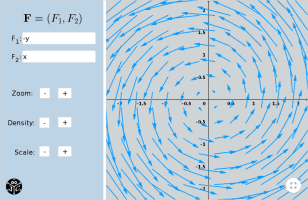I found the book "Further Engineering Mathematics" by K A Stroud useful. You'll probably find it in most university engineering libraries therefore I recommend thumbing through it before borrowing to see if it suits your needs.
What is your intuitive understanding of each of these operators? What does each operate on and return ("scalar field" or "vector field")?
Thank you. I don't have access to uni library for now; I left uni donkey years ago.
This book is on Internet Archive. Unfortunately however, presumably due to a law case that is going on, it's not up for borrow. Nonetheless, I found several other books with a slightly different title, Advanced Engineering Mathematics.
I think I already have reasonably good intuition of all of these concepts, including the types of the domain/codomain (scalar vs vector) for each of these. I wanted a better understanding of curl in particular, and this is probably interrelated to the problem of rotation of rigid body, which again shakes hands with my recent quest into the phenomenon of tides, and another interesting topic of precession.
One of these books I found is already interesting. One specific question that came up (tho this is digressing from the original question, but certainly related) --

This theorem joins curl and rigid body rotation. But it puzzles me somewhat. In my understanding, curl of a vector field is also a vector field. This aspect is however opaque in this theorem. I think it's safe say, on the basis of it, that the curl along the rotating axis of the rigid body, the curl of the velocity field is a vector along this axis with magnitude twice the angular speed of the rotation. It's not clear to me, at least from the expression of the theorem, whether the curls at other locations are also the same (such as on the edge of rotating disc). I believe it is, based on the derivation of this theorem, giving a curl (field) that is a constant.
And if so, it's interesting (and somehow counterintuitive) to me. This shows somehow the nature of rotation.
[Some more context: In my quest into the phenomenon of tides, I tend to think rotation is absolute, while - as we all know - translational movement is relative. And in the process, I 'discovered' some nuances of what we are commonly taught, such as the Moon rotates around the Earth. This is frustratingly inaccurate; the truth is, it's both the Earth and the Moon as a combination, rotating their common centroid, albeit being close to, even under the surface of, the Earth. But nonetheless, we should not say the Moon rotates around the Earth, as it the Earth was still or only translationally moving, or even rotating around the Sun, which again is similarly inaccurate, in my opinion.]
I will have more reads of the subject book, and I guess to achieve what I wanted, the only way is probably find all the related materials that I can find and join them together to see if that helps. It will require, of course, more study of the interpreted subjects that interest me.
This is not urgent but rather a part of where curiosity drives me to.




